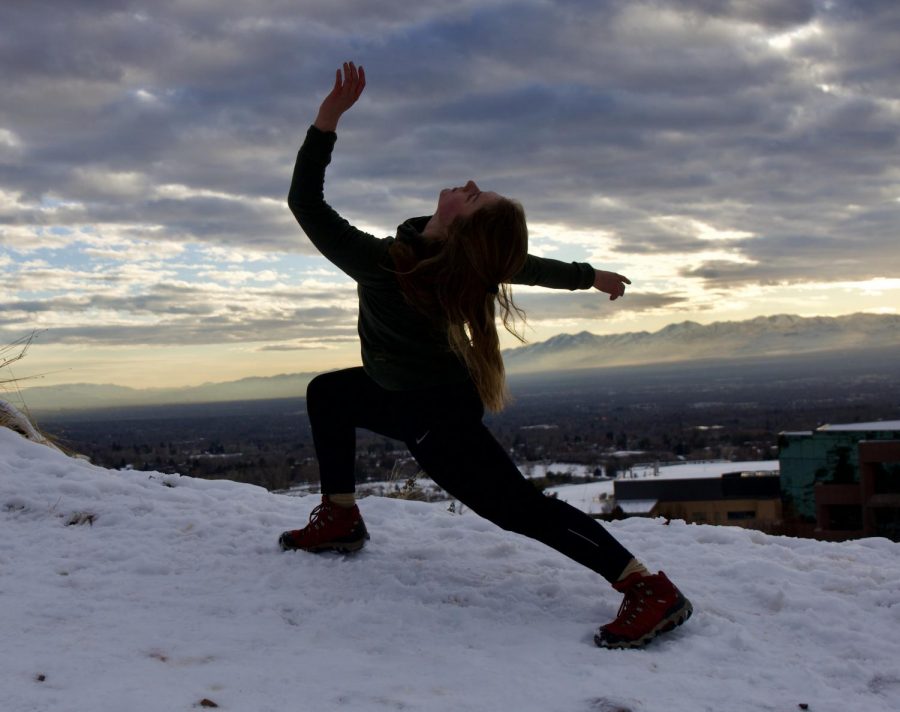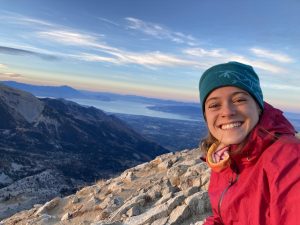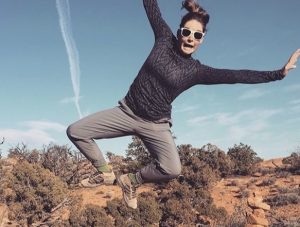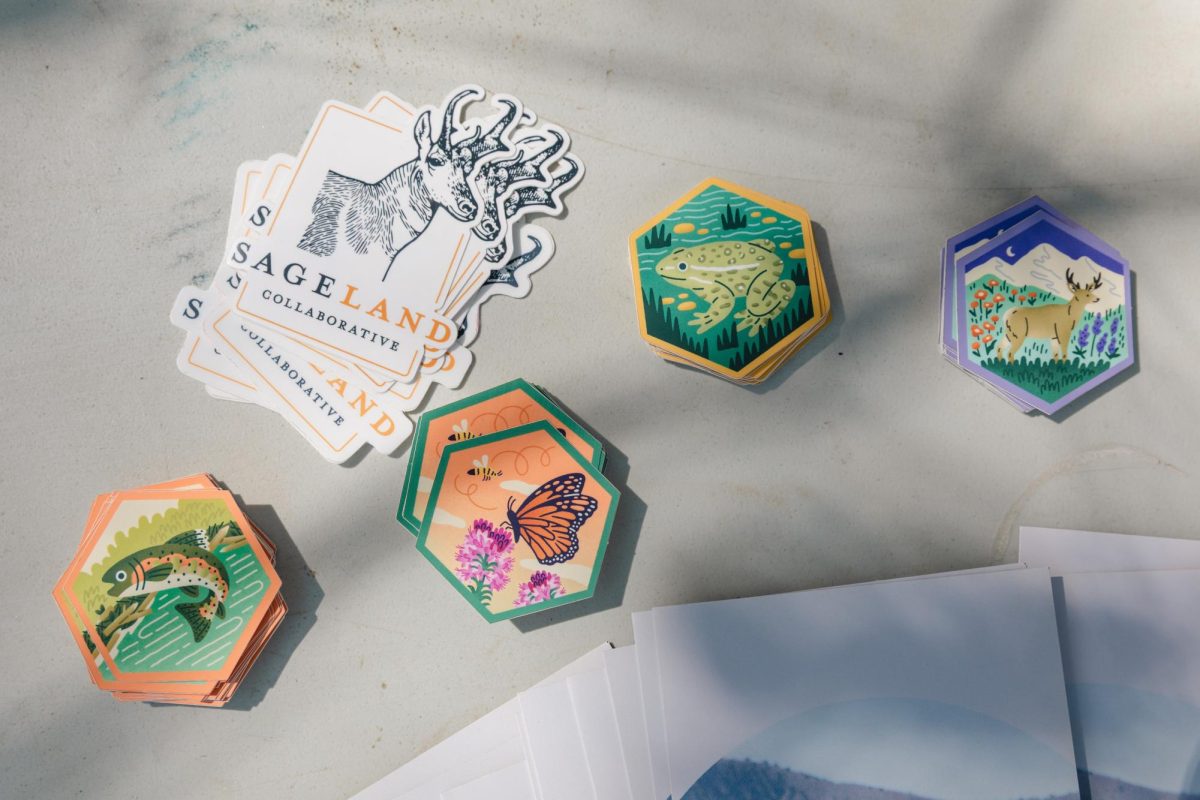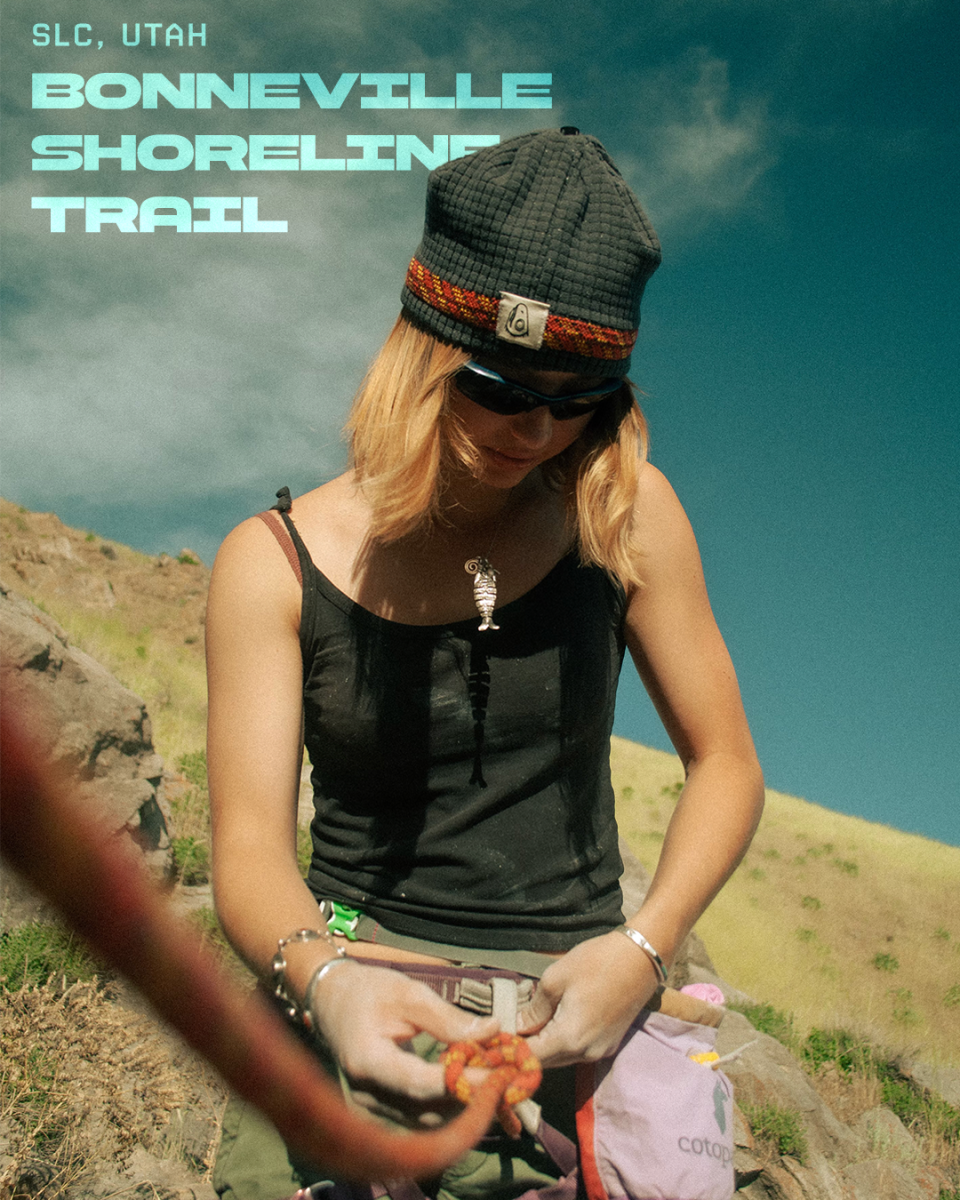Artist Crossing: Alli Schuh’s Body-Oriented Canvas
February 17, 2020
Gloomy winter months can be emotionally draining. Ongoing cloud cover, lengthy nights and unexpected storms often contribute to Seasonal Affective Disorder. Fortunately, there are coping mechanisms. Some head up a canyon to ski, snowboard, snowshoe or ice climb. Being outside can help break depressive cycles and force people to embrace seasonal changes. Others become more introspective, sometimes turning to a form of self-expression to process and channel their emotions. As a dancer, writer and adventurer, I have often speculated about how my passions might overlap. What I have realized is that both reflection and movement are what get me through the colder, darker months of the year, but I have not yet developed practices which combine my interests. Alli Schuh, a first-year student majoring in modern dance and psychology and minoring in Spanish, is currently delving into and fleshing out the intersection between art and nature.
Schuh first united her artistic and outdoor explorations on a coastal backpacking trip during high school. She and her friend began recording movement, which set the precedent for her future “mountain dances.” She noticed how the nonlinearity of dance prevents post-trek stiffness. Dancing also allows Schuh to simultaneously connect to her body and surroundings. “When I’m outside… I tap into this awareness of my body right away,” she said. “We’re animals in nature and your senses are heightened.” Other artistic practices, such as painting, also play an important role in Schuh’s life. She plans on bringing watercolors onto future backpacking trips.
Schuh is curious about how she can effectively bring her outdoor experiences into the dance studio. “I want to figure out how to tap into that primal energy right away and not have it be a cognitive thing,” she said. Schuh quoted a friend who pointed out that “‘all insides are outsides.’” As we sat in the triangular lounge in the Marriott Center for Dance, Schuh said, “It’s all space — this is still outside, in a way.”
Schuh recalled one dance experience which helped her process what had happened beyond the studio walls. After being involved in a traumatic bike accident, Schuh attended a dance intensive. “It was the most beneficial thing I could have done following that week,” Schuh explained. “[The memories] were starting to come back and movement was a way to process them — to get whatever I was feeling on the inside out because I couldn’t really speak them out loud yet,” said Schuh.
Schuh has concluded that being outside and expressing herself through artwork are interrelated in the essence that they both promote self-exploration and healing. Schuh does not go outside “just to grit [her] teeth and get through the hike.” She treats each outdoor excursion and mountain dance “as a decompression— a way to process.” Schuh’s goal is to spread her discoveries and practices to people beyond her immediate web of friends. She believes that outdoor recreation can perpetuate unhealthy comparisons and therefore be inaccessible to some people. “I think the outdoor community needs more of the curiosity and self-exploration-driven movement [that is found in dance],” she said. Schuh acknowledges that dancing, especially when based on improvisation, can be vulnerable. “I think there’s mastery [involved] in creating an environment where people do feel comfortable to just move their body in a non-judgemental way, of themselves or of others.” She does not have all the answers yet, but she is following her inclination that “the root of self-confidence” can be found in creative processes. Schuh also understands that her own vulnerability is instrumental to such teaching experiences. “I can’t pretend to give out my story if I haven’t found it myself first,” she said.
Speaking with Schuh has encouraged me to find new ways to combine my experiences. I have learned that movement and expression can be therapeutic, both on macro and micro scales. I won’t always have the luxury of traveling an hour away to carve some turns or pitch a tent, but the experiences I have had outside are still stored within my body. Expressive and meditative outlets become particularly essential during the winter and they vary from person to person. I simply encourage everyone — including those who have never held a paintbrush or stepped onto a dance floor — to practice smaller movements, to try new activities and to reflect deeply.


